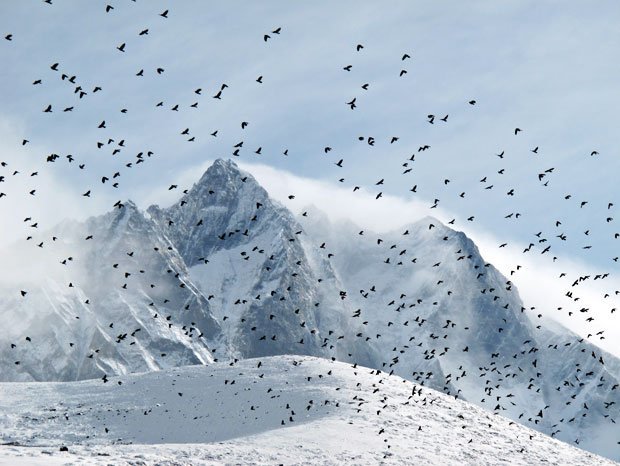Mt Everest Trek: Day eleven

Read more about the AG Society supported Ama Dablam Everest Trek in Nepal, run by World Expeditions.
DAY ELEVEN: The weather continues to look dodgy, so the decision’s made to continue down the valley in case. We’re completing something of a narrow loop; we made our way up to Bibre mostly on the eastern side of the Imja Khola, and we’ll go back largely on its western side. It would be outlandish to say “on its western bank” because the valley is so steep-sided we’re rarely closer than a couple of hundred metres from the waters, which are a cold, mottled aqua-grey – it’s as if you can see the ice running downstream.
There are innumerable Mani walls and chorten along the trail. Nima, our trekking sirdar (supervisor), tells me that anyone is welcome to re-etch or paint the carvings on Mani walls – which is usually done for Losar, Tibetan New Year – but that the knowledge is disappearing. “Too many people want to be modern these days,” Nima says. “All want to move to Kathmandu.”
During a break in Pangboche, we see a couple lifting potatoes from their winter-storage mounds. Potatoes are stored outdoors: tipped into a hole in the field, covered with juniper leaves and then have soil mounded over the top. It’s warmer underground than above and the spuds keep better this way.
The last part of the day’s walk rises from Deboche to Tengboche; the snow has made the going muddy and to churn it up more it’s like a yak highway – some of the yak trains are moving regular trading goods, but it’s also the time of year that Everest expeditions start arriving. Our campsite is within sight and sound of the monastery (which – to my surprise – remains brightly lit all night; it has its own hydro power). Late in the day there are a few splots of snow, and it looks like it’s snowing pretty solidly up the valley. Coming down appears to be the right decision.
Read more from Ian’s daily Himalayan blog.

